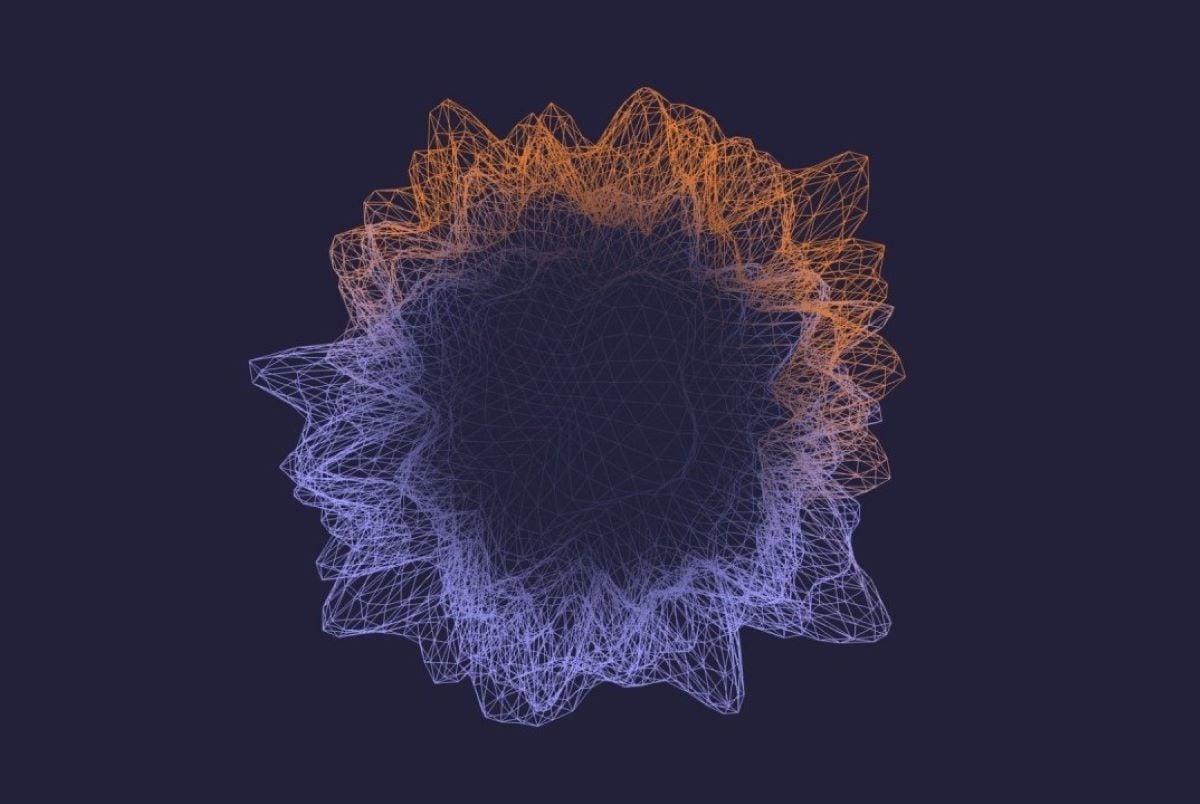
Artists navigate uncharted AI territory
Harmeet Chagger-Khan leads on innovation, and immersive and interactive projects at The Space. Here she explores how artists are using AI and why transparency and media literacy are vital to ensure it is accessible to all.
Every wave of technological innovation has resulted in an acceleration of progress, which has been met with both the hunger for what technology can offer and the threat of disruption to established societal norms, roles and values.
From the Luddites' resistance to the spinning jenny to the advent of the internet age, society has grappled with the rapid pace of progress.
And now AI. AI is a tool that intrigues and intimidates. It promises to reshape industries and revolutionise human existence. And where there's technology, there are artists who dare to explore new realms of creativity.
Many artists working with AI and emerging tech are pushing those boundaries. They are collaborating with developers and researchers and using AI tools in more intelligent ways, creating critical work that challenges the status quo and forces us to think. They are telling stories in more considered ways using AI as an enabler.
Understanding complex concepts
Indigo Storm's Vocalize installation is an excellent example of how AI can make us think more carefully about how we use technology. An exciting new commission from The Space, which opened at CPH Dox in Sweden in March, it aims to train the voices of the future. This training in voice techniques, by an AI named Haley, opens up the possibility to become a voiceover actor.
It's an exciting project which uses Chat GPT and AI software that clones your voice. It questions what AI can do – whether it can help with learning skills – and how it is viewed in the world.
It helps us understand complex concepts like trust and data privacy by telling stories to make people think about the consequences of their actions. It's a provocative work that explores the boundaries of AI and empowers us to make informed decisions about our digital footprint.
Questioning algorithmic bias
Two other artists redefining where humanity might go using AI are award-winning artist and 'Storyteller from the Future' Karen Palmer and CGI artist Alan Warburton. I chaired a lively AI panel with them and Professor Elena Simperl of King's College London – Marching into the 6th Industrial Revolution – at this year’s REMIX London in January.
A renowned thought leader in immersive storytelling, Karen used AI to create Consensus Gentium (XR Experience Winner 2023 at SXSW). This installation responds to viewers' emotions and facial expressions to raise questions about algorithmic bias and surveillance capitalism. Using a compelling post-dystopian branching narrative, she urges us to ponder the consequences of our actions on future generations.
Meanwhile, Alan's film/docu-essay – The Wizard of AI – is a stunning and thought-provoking piece that encourages us to think critically about our reality and the impact of our actions on the environment. Commissioned by the Open Data Institute, it explores the tension between the marvel of AI-generated art and the ethical implications of its widespread adoption, a state he calls Wonder Panic.
These projects are intended to challenge our perceptions of trust and agency in a world increasingly shaped by algorithms. However, as artists embrace AI they confront a myriad of challenges: financial constraints, ethical dilemmas and concerns over copyright and intellectual property. So, how do they navigate this uncharted territory while maintaining the trust of their audiences?
Transparency is key
By openly discussing the use of AI and its implications, artists can build trust and dialogue with their audience. A prime example is Playable City’s How (Not) to Get Hit by a Self-Driving Car by Tomo Kihara and Playfool. It’s a street-based game that challenges players to avoid being detected as a pedestrian by the eye of AI.
As a player, you must try to fool an AI-powered system into thinking you are not human in order to cross a road. Of course, the real aim of the game is to be recognised as a human being.
But by placing us in the safe and familiar environment of a game, the creators force us to question how the data in these massive neural networks and large language models are used to train the AI systems making these ethical decisions.
Becoming better critical thinkers
Promoting media literacy is also important and artists play a significant role in teaching this. By using AI technology transparently and playfully, they show us how to be more discerning about how we operate in the world.
They give us a sense of intelligence and literacy to understand the power of technology and guide us in using it to become better critical thinkers and improve our lives.
In times of rapid progress, we are presented with great opportunities to move forward and advance as a society, and we need to be mindful about how we use them. It is vital that as artists, we continue to push the boundaries of technology in critical, political, playful and reflective ways.
By doing so, we can create experiences that engage everyone, allow us to think intelligently about our relationship with technology and ensure no one is left behind.
Harmeet Chagger-Khan is a Digital Producer at The Space.
![]() thespace.org
thespace.org
![]() @thespacearts | @LuciaAttica
@thespacearts | @LuciaAttica
This article, sponsored and contributed by The Space, is part of a series spotlighting new ways of creating and distributing digital content, and exploring the wealth of new technologies and platforms coming online.
Join the Discussion
You must be logged in to post a comment.